TEX11 is mutated in infertile men with azoospermia and regulates genome‐wide recombination rates in mouse
Fang Yang, Sherman Silber, N Adrian Leu, Robert D Oates, Janet D Marszalek, Helen Skaletsky, Laura G Brown, Steve Rozen, David C Page, P Jeremy Wang, 01.07.2015
Abstract
Genome‐wide recombination is essential for genome stability, evolution, and speciation. Mouse Tex11, an X‐linked meiosis‐specific gene, promotes meiotic recombination and chromosomal synapsis. Here, we report that TEX11 is mutated in infertile men with non‐obstructive azoospermia and that an analogous mutation in the mouse impairs meiosis. Genetic screening of a large cohort of idiopathic infertile men reveals that TEX11 mutations, including frameshift and splicing acceptor site mutations, cause infertility in 1% of azoospermic men. Functional evaluation of three analogous human TEX11 missense mutations in transgenic mouse models identified one mutation (V748A) as a potential infertility allele and found two mutations non‐causative. In the mouse model, an intronless autosomal Tex11 transgene functionally substitutes for the X‐linked Tex11 gene, providing genetic evidence for the X‐to‐autosomal retrotransposition evolution phenomenon. Furthermore, we find that TEX11 protein levels modulate genome‐wide recombination rates in both sexes. These studies indicate that TEX11 alleles affecting expression level or substituting single amino acids may contribute to variations in recombination rates between sexes and among individuals in humans.
YANG, Fang, et al. TEX11 is mutated in infertile men with azoospermia and regulates genome‐wide recombination rates in mouse. EMBO molecular medicine, 2015, 7. Jg., Nr. 9, S. 1198-1210.
Publication: https://doi.org/10.15252/emmm.201404967
 Disclaimer
Disclaimer
The publication TEX11 is mutated in infertile men with azoospermia and regulates genome‐wide recombination rates in mouse by Fang Yang, Sherman Silber, N Adrian Leu, Robert D Oates, Janet D Marszalek, Helen Skaletsky, Laura G Brown, Steve Rozen, David C Page, P Jeremy Wang is published under an open access license: https://creativecommons.org/licenses/by/4.0/. Granted rights: share — copy and redistribute the material in any medium or format and adapt — remix, transform, and build upon the material.
Curation by the MFGA team Relevant data sets presented in the publication have been identified. If possible, annotations (title, general information, conditions, processed tissue types and processed cell types) have been added based on information from the publication. Data tables and images that provide a good overview on the publication's findings on the data set have been extracted from the publication and/or supplement. If not stated otherwise, images are depicted with title and description exactly as in the publication. Tables have been adjusted to the MFGA table format. Conducted adjustments are explained in the detailed view of the tables. However, titles and descriptions have been adopted from the publication.
Data set 1: Frequent singleton TEX11 mutations in men with spermatogenic failure and the identification of missense mutations causing chromosomal synapsis defects
Genome: Other
Species
| Species |
|---|
| Human |
Conditions
| Human phenotype ontology | Participants | Comment |
|---|---|---|
| HP:0011961: Non-obstructive azoospermia | 246 | |
| HP:control | 175 | men known to have fathered children (n = 93) and men of unknown fertility selected to represent worldwide genetic diversity based on their Y-chromosomal haplotypes (n = 82, samples from the NIH polymorphism discovery panel, Coriell Cell Repositories, and from our collection) |
Tissue Types
| BRENDA tissue ontology | Maturity | Description | Species | Replicates |
|---|---|---|---|---|
| BTO_0001363: testis | Adult | Human |
Cell Types
| Cell ontology | Maturity | Description | Species | Replicates | Cells per replicate |
|---|---|---|---|---|---|
| CL_0000017: spermatocyte | Adult | zygotene and pachytene | Human |
Images
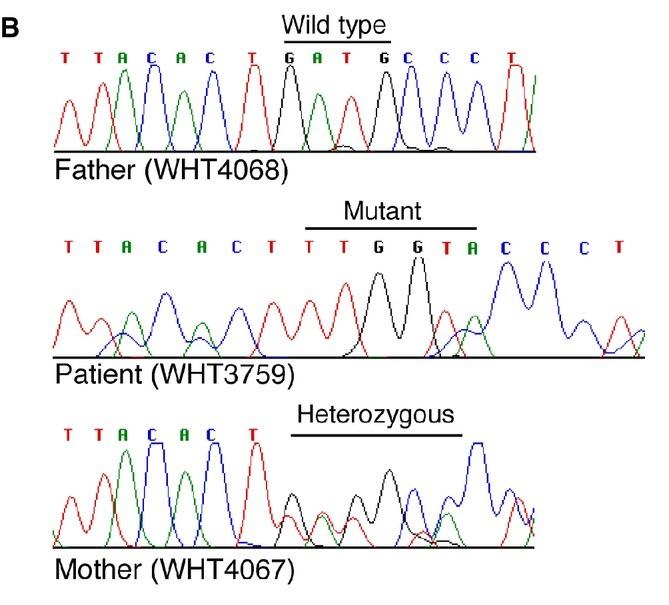
Figure 1 B: Complex frameshift mutation (patient WHT3759)
The nucleotide sequence in exon 16 (in parentheses) changes from ACT(GATG)CCC to ACT(TTGGTA)CCC, resulting in a net insertion of two bases and generation of a KpnI restriction site (underlined). We confirmed heterozygosity of the mother (WHT4067) by KpnI digestion of PCR products (data not shown).
Licensed under: https://creativecommons.org/licenses/by/4.0/
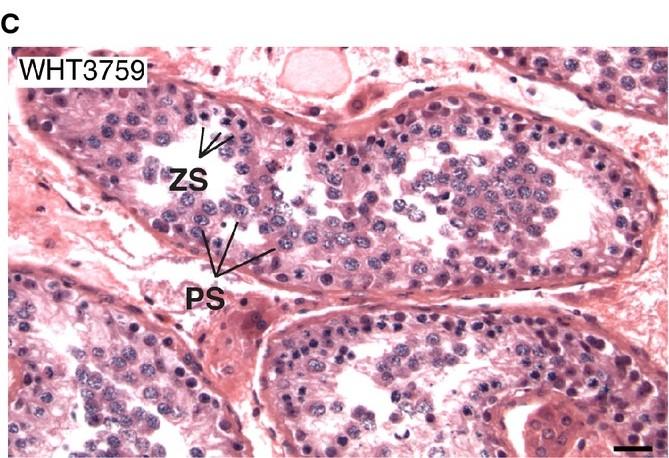
Figure 1 C: Testicular maturation arrest in the patient (WHT3759)
Testicular tissue obtained by biopsy was sectioned and stained with hematoxylin/eosin. Seminiferous tubules contained meiotic germ cells such as zygotene (ZS, arrowheads) and pachytene spermatocytes (PS, arrows), but no post-meiotic germ cells such as round spermatids were detectable. Scale bar, 25 μm.
Licensed under: https://creativecommons.org/licenses/by/4.0/

Figure 5 A: Schematic representation of missense and nonsense mutations in human
Schematic representation of missense and nonsense mutations in human TEX11 found exclusively in men with azoospermia. The full-length TEX11 protein (GenBank accession number: NP_112566) contains 925 residues. The tetratricopeptide-like (TPR-like) helical domain, found in proteins that form large complexes, extends from residues 161 through 499 (Blatch & Lassle, 1999). Four of the residues mutated in azoospermic men (W117, V142, Q172, and V748) are conserved between human and mouse TEX11 proteins (Supplementary Fig S1).
Licensed under: https://creativecommons.org/licenses/by/4.0/
Data set 2: Experimental transfer of Tex11 from the X chromosome to an autosome
Transcriptome: Other
Species
| Species |
|---|
| Mouse |
Tissue Types
| BRENDA tissue ontology | Maturity | Description | Species | Replicates |
|---|---|---|---|---|
| BTO_0001363: testis | Adult | Tex11 KI/KO, and Tex11−/Y males | Mouse | |
| BTO_0001363: testis | Adult | wildtype | Mouse |
Cell Types
| Cell ontology | Maturity | Description | Species | Replicates | Cells per replicate |
|---|---|---|---|---|---|
| CL_0000018: spermatid | Adult | round and elongating | Mouse | ||
| CL_0000017: spermatocyte | Adult | pachytene | Mouse |
Images
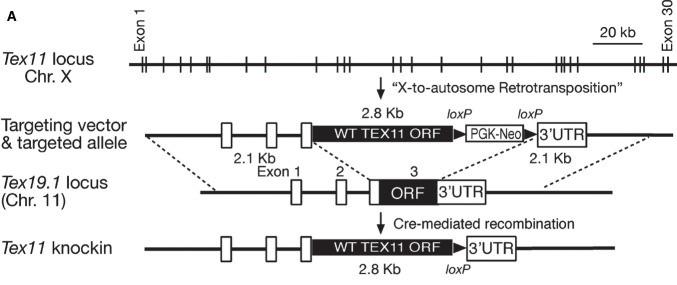
Figure 2 A: Diagram of Tex11/,Tex19.1 gene structure
Schematic diagram of Tex11 gene structure, Tex19.1 gene structure, targeting vector and the final Tex11 knockin allele containing the wild-type Tex11 ORF.
Licensed under: https://creativecommons.org/licenses/by/4.0/

Figure 2 E and F: A wild-type Tex11 knockin allele at the autosomal Tex19.1 locus rescues male sterility in Tex11-null adult mice
E: Histological analysis of testes from adult wild-type, Tex11 KI/KO, and Tex11−/Y males. RS, round spermatids; ES, elongating spermatids; Pa, pachytene spermatocytes. Scale bar, 50 μm.<br/>F: The Tex11 knockin allele rescues chromosomal synapsis defects in Tex11−/Y spermatocytes in 3-month-old males. Chromosomal synapsis defects were assessed by SYCP1 and SYCP2 immunostaining of spread nuclei from 100 pachytene spermatocytes per male; for each genotype, three males were analyzed. Abbreviations for Tex11 genotypes: −/Y, Tex11 knockout (Yang et al, 2008); KI;−/Y, Tex11 knockin and knockout; +/Y, wild type; KI;+/Y, Tex11 knockin plus wild-type Tex11. All statistical analyses were performed using Student’s t-test. n.s.: not statistically significant.
Licensed under: https://creativecommons.org/licenses/by/4.0/
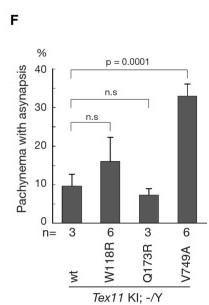
Figure 6 F: A single amino acid change (V749A) in TEX11 causes severe defects in chromosomal synapsis in mice
Dramatically increased chromosomal asynapsis in spermatocytes from Tex11 KI(V749A)/KO males. 100 pachytene spermatocytes per mouse were examined by surface spread analysis. Values are shown as average ± standard deviation. n.s.: not statistically significant.
Licensed under: https://creativecommons.org/licenses/by/4.0/
Data set 3: Defective meiosis in the first wave of spermatogenesis in Tex11 KI/KO mice
Transcriptome: Other
Species
| Species |
|---|
| Mouse |
Tissue Types
| BRENDA tissue ontology | Maturity | Description | Species | Replicates |
|---|---|---|---|---|
| BTO_0001363: testis | Infant | 8-week-old Tex11 KI/KO males | Mouse | |
| BTO_0001363: testis | Infant | 8-week-old wildtype males | Mouse | |
| BTO_0000975: ovary | Embryonic | Tex11−/−, Tex11+/− on embryonic day-17.5 | Mouse | |
| BTO_0000975: ovary | Embryonic | wildtype females on embryonic day-17.5 | Mouse |
Cell Types
| Cell ontology | Maturity | Description | Species | Replicates | Cells per replicate |
|---|---|---|---|---|---|
| CL_0000017: spermatocyte | Adult | 1-month-old males | Mouse | ||
| CL_0000023: oocyte | Embryonic | Tex11−/−, Tex11+/−, and wild-type mice on embryonic day-17.5 | Mouse | ||
| CL_0000017: spermatocyte | Infant | 25-day-old Tex11 KI/KO males | Mouse |
Images
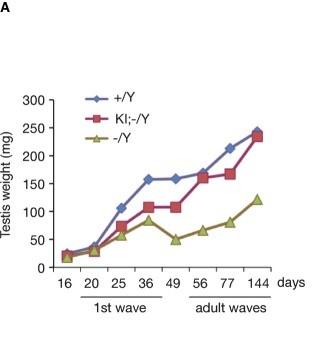
Figure 3 A: Defective meiotic progression in the first wave of spermatogenesis in Tex11 KI/KO males
The knockin allele expresses the wild-type Tex11 ORF. Reduced testis weight in juvenile but not adult Tex11 KI; −/Y males. The time frames of the first wave and adult waves of spermatogenesis are indicated.
Licensed under: https://creativecommons.org/licenses/by/4.0/
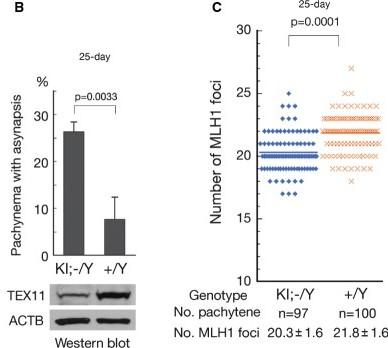
Figure 3 B and C: Chromosomal synapsis defects in spermatocytes
B: Increased chromosomal asynapsis in spermatocytes and reduced levels of TEX11 protein in the testes of 25-day-old Tex11 KI/KO males. Chromosomal synapsis defects were assessed by SYCP1 and SYCP2 immunostaining of spread nuclei from 100 pachytene spermatocytes per male; for each genotype, three males were analyzed. <br/>C: Pachytene spermatocytes from 25-day-old Tex11 KI/KO males contain significantly fewer MLH1 foci compared to wild-type spermatocytes. Values are shown as average ± standard deviation. Error bar is standard deviation. Statistical analyses were performed with Student’s t-test.
Licensed under: https://creativecommons.org/licenses/by/4.0/
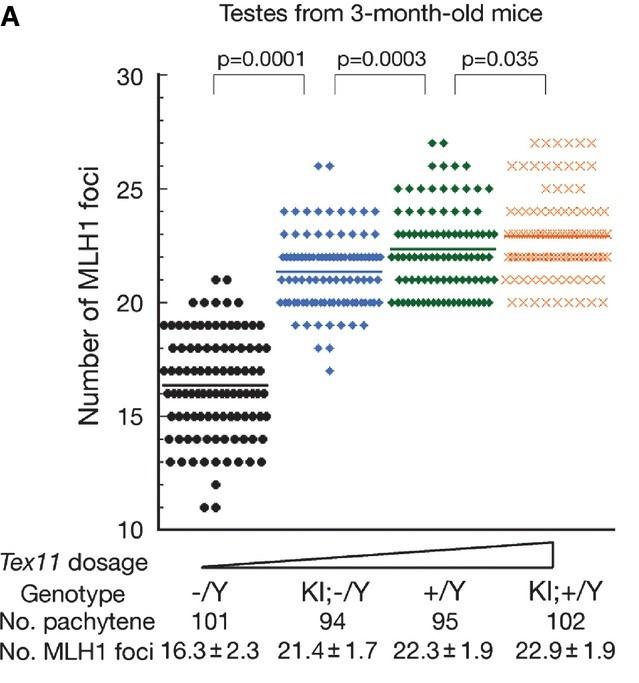
Figure 4 A: Tex11 dosage affects the number of MLH1 foci in meiotic germ cells in males
The number of MLH1 foci in pachytene spermatocytes from 3-month-old males positively correlates with increasing Tex11 gene dosage. Statistical analyses were performed with Student’s t-test.
Licensed under: https://creativecommons.org/licenses/by/4.0/
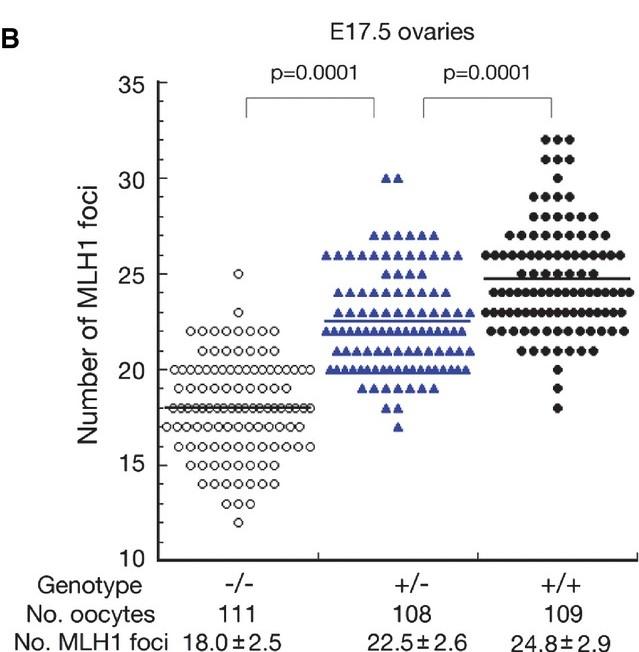
Figure 4 B: Tex11 dosage affects the number of MLH1 foci in meiotic germ cells in males
Quantification of MLH1 foci in pachytene oocytes from the ovaries of Tex11−/−, Tex11+/−, and wild-type embryonic day-17.5 (E17.5) fetuses reveals a positive correlation of Tex11 gene dosage and the number of MLH1 foci. Statistical analyses were performed with Student’s t-test.
Licensed under: https://creativecommons.org/licenses/by/4.0/

Figure S3: Number of MLH1 foci in spermatocytes from 3-month-old males
Representative images are shown for the following Tex11 genotypes: A) -/Y, 17 MLH1 foci; B) KI;-/Y, 21 MLH1 foci; C) +/Y, 22 MLH1 foci; D) KI;+/Y, 26 MLH1 foci. This supplementary figure is related to Figure 4A.
Licensed under: https://creativecommons.org/licenses/by/4.0/
